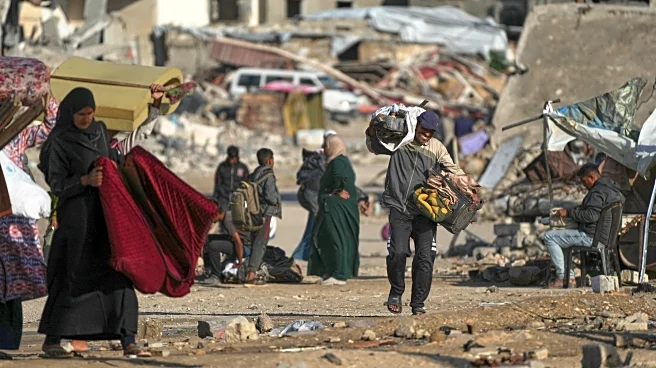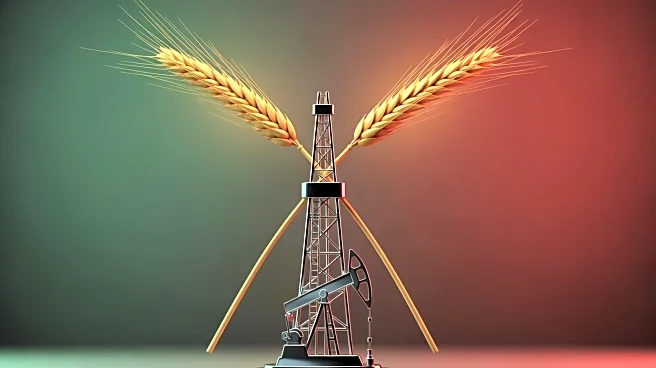What's Happening?
Russia has significantly reduced its wheat exports to Mexico, shipping only 58,000 metric tons from its Kaliningrad port this year. This marks a notable decrease from previous years, where exports reached
947,000 tons in 2023. The reduction is part of Russia's strategy to diversify its grain export markets beyond the Middle East, targeting regions such as Latin America, Asia, and Africa. The Kaliningrad food safety watchdog has inspected the wheat shipments destined for Mexico, issuing certificates for three separate shipments. Russia's leading agricultural exporter, Sodruzhestvo, owns the grain terminal in Kaliningrad, which is projected to harvest up to 730,000 tons of wheat in 2025, making it a leader in grain yields among Russian regions.
Why It's Important?
The reduction in wheat exports from Russia to Mexico could have significant implications for trade relations and market dynamics. Mexico, which has relied on Russia as its third-largest wheat supplier after the U.S. and Canada, may need to seek alternative sources to meet its demand. This shift could affect pricing and availability of wheat in Mexico, potentially impacting food industries and consumers. Additionally, Russia's move to diversify its export markets may alter global grain trade patterns, influencing supply chains and economic strategies in targeted regions such as Latin America, Asia, and Africa.
What's Next?
As Russia continues to diversify its grain export markets, Mexico may explore new partnerships or increase imports from existing suppliers like the U.S. and Canada to compensate for the reduced Russian supply. This could lead to negotiations or adjustments in trade agreements to ensure stable wheat supply. Furthermore, other countries in Latin America, Asia, and Africa might experience increased Russian wheat exports, potentially reshaping their agricultural import strategies and economic dependencies.
Beyond the Headlines
The reduction in Russian wheat exports to Mexico highlights broader geopolitical and economic strategies, as Russia seeks to expand its influence in non-traditional markets. This move may reflect Russia's response to international sanctions and efforts to strengthen economic ties with diverse regions. The shift could also prompt discussions on food security and trade resilience, as countries assess their dependencies on specific suppliers and consider diversification to mitigate risks.












